Kingsgrove Branch:
Schnap Electric Products Blog
Schnap Electric Products Blog Posts
Isolator

G'day! If you have recently walked around the side of your house to look at your hot water system or the outdoor unit of your air conditioner, you might have noticed a chunky, grey box with a big rotary dial on it mounted on the wall nearby. That device is an isolator switch, and while it might look like a boring piece of industrial plastic, it plays a critical role in keeping your home and the tradespeople who work on it safe.
In Australia, strict electrical standards dictate how heavy appliances are connected. You cannot just hardwire a high-current device straight back to the switchboard without a local means of disconnection. Let's break down what this switch does and why it is a non-negotiable part of a compliant installation.
What Does an Isolator Switch Actually Do?
An isolator switch (often called a rotary isolator or weatherproof isolator) is a heavy-duty manual switch that completely cuts off the electrical supply to a specific appliance or circuit.
Unlike a circuit breaker in your switchboard which trips automatically during a fault, an isolator is manually operated. Its primary job is safety during maintenance. When an air conditioning technician or a plumber needs to service your unit, they turn this switch to the "OFF" position. This creates a physical air gap in the circuit, ensuring that the appliance is dead and cannot be accidentally turned back on from inside the house while they have their hands in the wiring.
Why Are They Mandatory?
It comes down to the Australian Wiring Rules (AS/NZS 3000). For fixed appliances like air compressors, motors, hot water heaters, and air conditioners, there must be an isolation point adjacent to the unit.
Imagine a technician is working on the fan motor of your outdoor AC unit. If the only switch is the one in the switchboard on the other side of the house, someone could unknowingly flick the power back on while the tech is working. An isolator switch right next to the unit prevents this scenario. Most high-quality isolators also feature a "lockable" handle, allowing the tradesperson to attach a padlock so the power absolutely cannot be restored until they are finished.
Weatherproof Ratings Matter
Because these switches are usually located outdoors, they need to be built tough. You cannot use a standard indoor switch.
When sourcing gear, a professional will look for an IP rating (Ingress Protection). In Australia, a rating of IP56 or IP66 is standard for an outdoor isolator switch. This ensures the unit is dust-tight and protected against heavy seas or powerful jets of water, which is essential for surviving the harsh Aussie sun and storm season. Using an inferior product that lets water in is a recipe for a short circuit and a fire hazard.
Sourcing Professional Gear
When it comes to electrical safety, quality is everything. A cheap switch with poor internal contacts can overheat under the heavy load of an air conditioner compressor.
A professional installer will always head to a reputable electrical wholesaler to source these components. They know that trade-grade isolators are made from UV-stabilised plastic that won't go brittle and crack after a summer in the Queensland or WA heat. They also ensure the switch is rated for the correct amperage (e.g., 20A, 35A, or 63A) to match the appliance it is controlling.
Installation: A Job for the Experts
While you might be able to mount the box to the wall, connecting the wires is strictly prohibited for DIYers. Installing an isolator switch involves interrupting the fixed wiring of your home and dealing with 240V or even 415V (three-phase) electricity.
This work must be carried out by a licensed electrician. They will ensure the connections are tight, the cable entries are sealed against moisture, and the earth continuity is maintained. A poor connection in a high-current isolator is a common cause of electrical fires, so always leave it to the professionals.
Trust Schnap Electric for Safety
If you need reliable isolation for your next project, you need components that meet the highest standards. You cannot afford for a safety device to fail.
Schnap Electric Products is a leading supplier for the trade industry in Australia. They stock a comprehensive range of heavy-duty industrial gear, including robust isolator switch units in single, double, and four-pole configurations. Whether you need a compact switch for a domestic hot water system or a large industrial isolator for a commercial workshop, they have the solution. By supplying the same professional-grade equipment you would expect to find at a major electrical wholesaler, Schnap Electric ensures your installation is compliant, safe, and built to last in Australian conditions. For safety you can trust, choose Schnap Electric.
Ground Loop Isolator
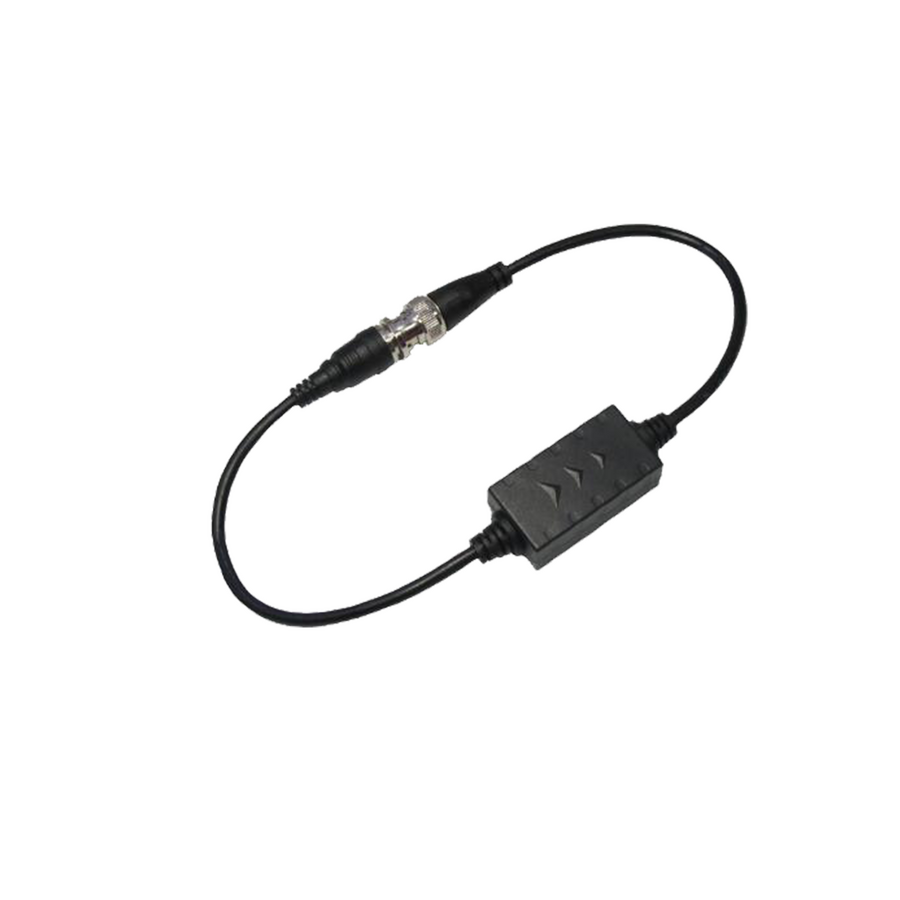
G'day! There is nothing more frustrating than investing in a schmick sound system for your lounge room or upgrading the stereo in your car, only to be met with an annoying, persistent hum. In a car, it often sounds like a high-pitched whine that gets louder when you accelerate. In a home theatre, it is usually a low-frequency buzz coming from the subwoofer.
Before you go tearing your hair out or ripping up the carpet to re-run cables, you should know that this is a very common issue known as a ground loop. Fortunately, there is a simple, plug-and-play device designed specifically to fix it: the ground loop isolator.
What Causes the Buzz?
To understand why you need an isolator, you have to understand the problem. A ground loop occurs when two pieces of audio equipment are connected to each other (like a radio and an amplifier) but are also connected to the power ground at different points.
If there is a slight difference in voltage potential between those two grounding points, a small electrical current flows through the shielding of your audio cables. Your amplifier amplifies this unwanted current, turning it into audible noise. In a vehicle, this often picks up interference from the alternator (alternator whine). In a home, it picks up the 50Hz mains hum.
How a Ground Loop Isolator Works
A ground loop isolator is a small box that sits between your audio source and your amplifier or speakers. Inside the box, there are usually isolation transformers.
These transformers work by breaking the direct physical electrical connection between the input and the output. instead of the electricity flowing straight through, the audio signal is converted into a magnetic field and then back into an electrical signal on the other side. This process allows the music to pass through clearly but blocks the DC current that is causing the hum. It effectively "isolates" the two grounds from each other.
Where to Use Them
These handy little devices are incredibly versatile and can be used in various applications across Australia.
Car Audio This is the most common use case. If you have installed an aftermarket amp and are hearing a whine that changes pitch with your engine revs, installing an isolator on the RCA cables between the head unit and the amp will usually silence it instantly.
Home Theatre Powered subwoofers are notorious for humming. Placing an isolator between the receiver and the subwoofer can clean up the sound immediately.
CCTV Systems It is not just for audio. Ground loops can cause "rolling bars" or distortion on analogue CCTV video feeds. A video ground loop isolator works on the same principle to clear up the picture.
Solving the Problem at the Source
While an isolator is a fantastic quick fix, it is sometimes a band-aid solution. If you have the time, it is worth checking that your grounding points are clean, paint-free, and secure. Sometimes, simply moving your equipment so it shares the same power outlet can resolve the issue.
However, if the wiring is fixed or you are dealing with complex interference, you might need to upgrade your cabling. You can visit a local electrical wholesaler to pick up heavier gauge earth cables or better-shielded interconnects, which can help reduce the potential for interference in the first place.
Easy Installation
The best thing about these devices is that you do not need a degree in engineering to install one. Most consumer models come with standard RCA connectors or 3.5mm jacks.
- Turn off your amplifier or speakers.
- Unplug the audio cables coming from your source.
- Plug the isolator into the source.
- Plug your audio cables into the other side of the isolator.
- Turn everything back on and enjoy the silence.
Get Quality Audio Accessories from Schnap Electric
If you are chasing crystal clear sound without the interference, you need reliable components. Cheap isolators can sometimes cut out the bass or treble frequencies along with the noise, leaving your music sounding flat.
Schnap Electric Products is a premier supplier for the trade industry in Australia. They stock a comprehensive range of audio-visual and electrical accessories, including high-performance ground loop isolator units designed to maintain signal integrity. By supplying the same professional-grade gear you would expect to find at a major electrical wholesaler, Schnap Electric ensures your audio and video systems perform perfectly. For a noise-free experience, trust the range from Schnap Electric.
DC Isolator
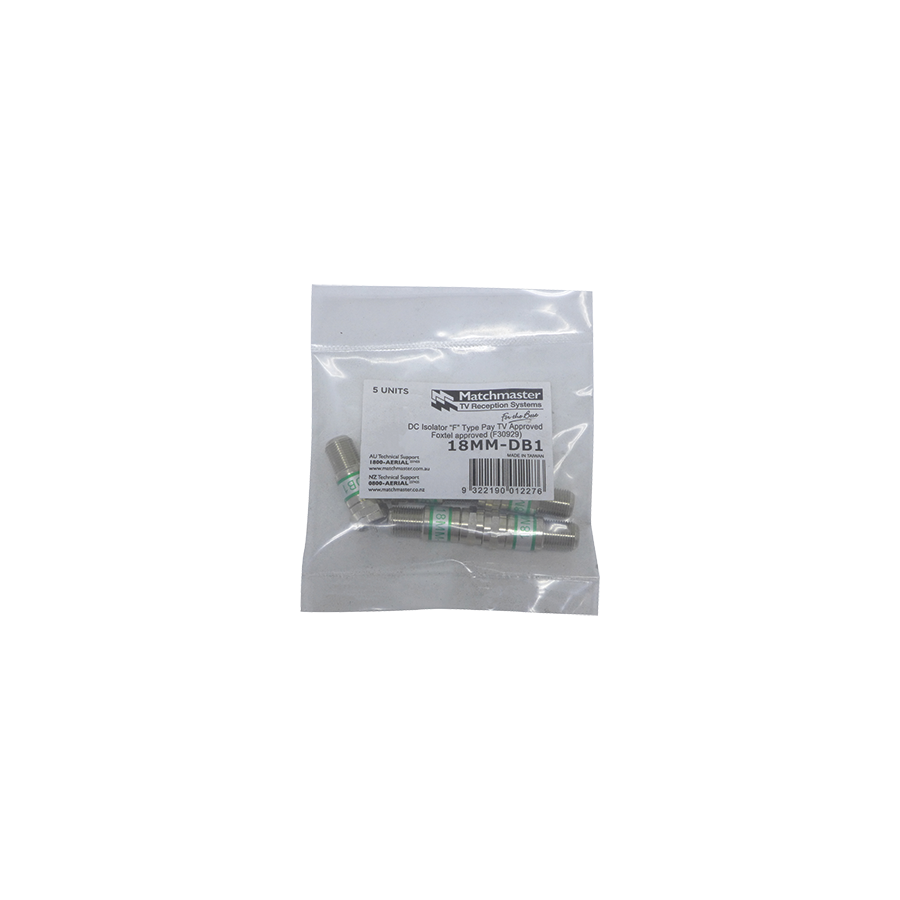
G'day! With the Australian sun beating down on us, it is no surprise that we have one of the highest rates of rooftop solar adoption in the world. We love cutting down our power bills and doing our bit for the environment. However, generating your own power comes with serious responsibilities regarding safety. At the heart of a safe solar installation is a critical, yet often overlooked component: the dc isolator.
While it might just look like a simple switch box sitting next to your inverter or up on the roof, this device plays a life-saving role. Understanding what it does and why you need a high-quality unit is essential for anyone looking to harness the sun without the risk.
What is a DC Isolator?
A dc isolator is a manually operated safety switch that is installed between your solar panels (the PV array) and your solar inverter. Its primary job is to cut the flow of Direct Current (DC) electricity.
Solar panels generate DC electricity as soon as the sun hits them. Unlike the Alternating Current (AC) we use in our house, DC power is constant and does not pass through a zero-volt point. This makes it much harder to interrupt. If you try to pull apart a live DC cable, the electricity can jump the gap, creating an arc of plasma that generates intense heat and can easily start a fire. A purpose-built isolator contains mechanisms to safely extinguish this arc and break the circuit.
Why Are They Mandatory in Australia?
Australia has some of the strictest solar standards in the world. Under our regulations, you typically need a dc isolator installed in two locations: one on the roof near the panels and another next to the inverter on the ground.
This allows emergency services or solar technicians to isolate the panels completely. If there is a fault with the inverter or if maintenance is required, turning off the isolator ensures that the high-voltage DC power stops before it reaches the equipment being worked on. While there is ongoing debate in the industry about the necessity of the rooftop switch, current standards dictate they must be present and compliant.
The Importance of Durability
The rooftop isolator has a tough life. It sits out in the blazing Aussie sun, gets hammered by rain, and endures temperature extremes day in, day out.
Historically, cheap and nasty isolators have been the cause of many solar fires. If the plastic casing isn't UV stabilised, it can become brittle and crack, letting water in. Water mixed with high-voltage DC electricity is a recipe for disaster. When you or your installer are sourcing parts, it is vital to look for premium brands that you would find at a trusted electrical wholesaler, rather than cheap imports that haven't been tested for our climate.
Installation is Strictly for Professionals
Installing or replacing a dc isolator is dangerous work. You are dealing with live voltage that cannot be turned off (unless you work at night), and working at heights adds another layer of risk.
In Australia, this work must only be performed by a licensed electrician who is also an accredited solar installer. They know how to terminate the cables correctly to prevent hot joints and ensure the enclosure remains waterproof. A professional will ensure that the switch is rated correctly for the voltage and amperage of your specific solar array.
Quality Solar Protection from Schnap Electric
When it comes to solar safety, you cannot afford to cut corners. Using an inferior switch to save a few dollars puts your entire home at risk. You need components that are built to withstand the harsh Australian environment.
Schnap Electric Products is a premier supplier for the trade industry, stocking a wide range of solar protection gear. They offer high-quality, UV-resistant dc isolator switches that are fully compliant with Australian Standards. By providing the same professional-grade equipment you would expect to find at a major electrical wholesaler, Schnap Electric ensures your solar system remains safe, efficient, and operational for years to come. For peace of mind on your roof, trust the quality range from Schnap Electric.
3 Phase Isolator
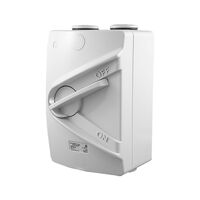
G'day! When you step up from standard household power to the heavy-duty world of commercial and industrial machinery, the rules of the game change. We are talking about 415-volt, three-phase power. It runs the big air conditioning units on office blocks, the motors in factories, and the heavy machinery in workshops across the country.
With that much power comes a massive need for safety. You cannot simply unplug a hardwired industrial lathe or a massive HVAC unit. To ensure these beasts can be serviced safely without putting lives at risk, you need a dedicated disconnection point. This is the job of the 3 phase isolator.
What is a 3 Phase Isolator?
A 3 phase isolator is a robust, manually operated switch designed to handle multi-phase electricity. Unlike a standard light switch that breaks a single active wire, this device cuts all three active phases (and often the neutral) simultaneously.
It acts as a local "off" switch located right next to the equipment it serves. It is not designed to trip automatically like a circuit breaker; its sole purpose is to allow a technician to physically isolate the machine from the power grid. This ensures that there is zero electrical energy flowing to the motor or compressor while maintenance is being carried out.
Why Are They Mandatory?
In Australia, safety regulations are incredibly strict regarding high-voltage machinery. The Australian Wiring Rules (AS/NZS 3000) dictate that fixed appliances must have a means of isolation that is readily accessible.
The key feature of a quality 3 phase isolator is its ability to be locked. When a technician arrives to service a rooftop air conditioner, they turn the massive rotary handle to "OFF" and attach a personal padlock to the switch. This is known as "Lockout/Tagout." It guarantees that nobody inside the building can accidentally turn the power back on while the technician has their hands inside the machine. It is a simple mechanism that saves lives every day.
Built Tough for Aussie Conditions
Because these switches are often mounted on rooftops, exterior walls, or in dusty workshops, they need to be built like a tank. You cannot use flimsy plastic outdoors in our climate.
When a professional sources gear from a reputable electrical wholesaler, they look for isolators with a high IP rating—usually IP66. This means the unit is completely dust-tight and protected against powerful jets of water. They are also made from UV-stabilised materials to prevent the casing from becoming brittle and cracking under the relentless Australian sun.
Installation: Strictly for the Pros
This is the most critical warning we can give. Three-phase power is 415 volts. It is significantly more dangerous than standard domestic power and allows for very little margin for error.
Installing or replacing a 3 phase isolator is absolutely not a DIY task. It is illegal and potentially fatal for anyone other than a licensed electrician to perform this work. A qualified professional ensures that the phase rotation is correct (so your motor doesn't run backwards), the connections are torqued properly to prevent fires, and the water seals are intact.
Heavy-Duty Gear from Schnap Electric
When you are dealing with high-voltage industrial equipment, you need components that you can trust implicitly. A failed switch can lead to costly downtime or dangerous safety breaches.
Schnap Electric Products is a leading supplier for the trade industry in Australia. They stock a comprehensive range of industrial switchgear, including robust 3 phase isolator units rated for various amperages to suit everything from small pumps to massive industrial plants. By providing the same high-standard, compliant equipment you would find at any major electrical wholesaler, Schnap Electric ensures your workplace remains safe, compliant, and operational. For heavy-duty safety you can rely on, trust the industrial range from Schnap Electric.
Cat5e vs Cat6
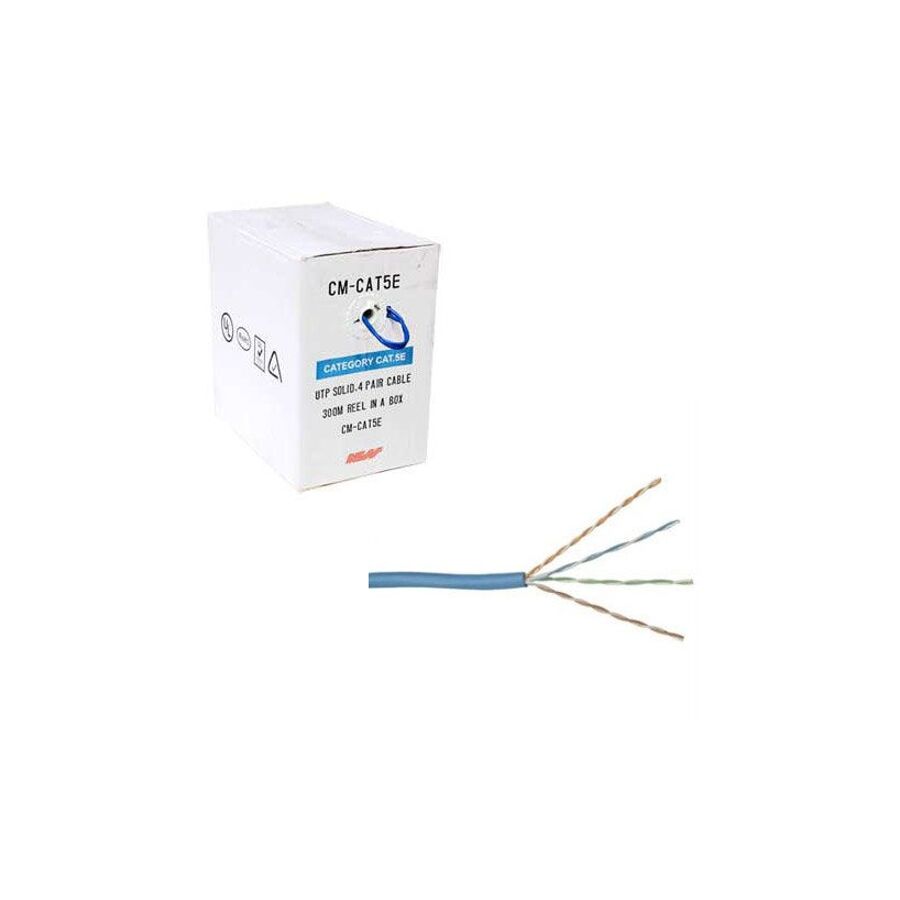
G'day! With the NBN rolling out faster speeds and our homes becoming smarter by the day, having a rock-solid internet connection is more important than ever. While Wi-Fi is convenient, nothing beats a hardwired connection for streaming the footy in 4K or gaming without lag. If you are planning a renovation or a new build, you are likely facing the common debate of cat5e vs cat6.
To the untrained eye, these cables look nearly identical, but what is going on under the jacket makes a massive difference to your network's performance. Let's break down the differences so you can decide which one is right for your Aussie home.
The Veteran: Category 5e (Cat5e)
Cat5e (the 'e' stands for enhanced) has been the standard for home networking for about two decades. It is a twisted pair cable that is flexible, easy to terminate, and generally cheaper to buy.
The Stats: It is rated for speeds up to 1 Gigabit per second (Gbps) and has a bandwidth of 100 MHz.
The Verdict: For most current NBN plans, Cat5e is still perfectly capable. If you move into an existing home that is already wired with Cat5e, there is usually no urgent need to rip it out unless you are experiencing interference issues. It handles general browsing and streaming just fine.
The Modern Standard: Category 6 (Cat6)
Cat6 is the new standard for residential and commercial installations in Australia. Physically, it is often a bit thicker and stiffer than Cat5e. If you cut it open, you will usually see a plastic spline or separator running down the middle, keeping the twisted pairs of wires apart.
The Stats: Cat6 supports bandwidths up to 250 MHz. While it handles 1 Gigabit speeds easily over long distances (100 metres), its real party trick is the ability to handle 10 Gigabit speeds over shorter runs (up to about 55 metres).
The Verdict: The internal separator significantly reduces "crosstalk" (interference between the wires) and system noise. This means your data packets get from point A to point B with fewer errors. You might see these rolls sitting side by side at your local electrical wholesaler, but the difference inside the jacket is what counts for long-term performance.
The Head-to-Head: Making the Decision
When weighing up cat5e vs cat6, it really comes down to future-proofing.
- Interference: Cat6 is far superior at blocking interference. If you are running data cables next to power cables in a wall cavity or ceiling, Cat6 is the safer bet to ensure a clean signal.
- Speed: While both do 1 Gigabit comfortably, file sizes are getting bigger and internet speeds are getting faster. Cat6 opens the door for 10 Gigabit networking in the future without needing to rewire the house.
- Cost: Cat6 is slightly more expensive per metre, but the labour cost to install it is roughly the same. Given that you don't want to be re-cabling your walls in five years, the small extra cost for Cat6 is usually worth it.
A Critical Warning on Installation
It is important to remember that in Australia, installing fixed data cabling (cables hidden in walls, ceilings, or floors) is regulated work. You cannot do this yourself.
This work must be carried out by a registered licensed cabler. They understand the specific separation rules required between data and electrical services to keep your home safe and your signal clear. A professional will ensure that the cable is terminated correctly at the wall plate to maintain the speed rating of the cable.
Sourcing Quality Data Gear
If you are going to the effort of cabling your home, you want to make sure the components match the cable quality. Using a Cat6 cable with an old Cat5 jack is a bottleneck waiting to happen.
Schnap Electric Products is a leading supplier for the industry, stocking high-performance data solutions that professionals trust. They offer a comprehensive range of both Cat5e and Cat6 cabling, along with the matching high-speed data jacks, patch panels, and wall plates needed to complete the job. By providing trade-quality gear that you would expect from a leading electrical wholesaler, Schnap Electric ensures your home network is built to handle high speeds reliably. Whether you stick with the budget-friendly Cat5e or invest in Cat6, getting quality components from Schnap Electric is the best way to ensure your connection stays fast and stable.
Cat5 vs Cat6
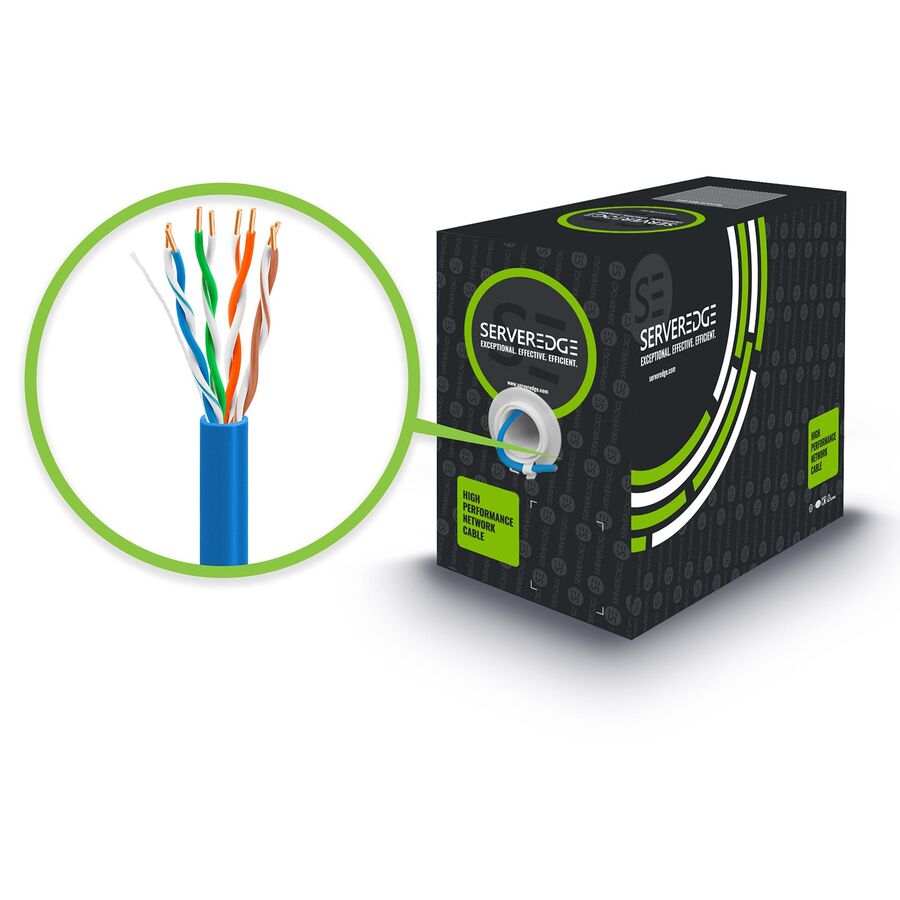
G'day! If you have connected to the NBN but are still finding your internet speed is a bit sluggish, the problem might not be your provider. It could be the physical wiring inside your walls. Technology moves fast, and the blue cable that was top-of-the-line twenty years ago might be the bottleneck in your modern home network. The debate often comes down to the old standard versus the new: cat5 vs cat6.
While they look almost identical from the outside, the technology inside these cables is vastly different. Understanding this difference is key to getting the most out of your streaming, gaming, and work-from-home setup. Let's have a look at why upgrading might be the best move you can make.
The Old Timer: Category 5 (Cat5)
If your home was cabled in the late 90s or early 2000s, you might have Category 5 cable installed. This was the standard for a long time.
The Specs: Standard Cat5 is rated for speeds up to 100 Megabits per second (Mbps) at 100 MHz bandwidth.
The Reality: In the world of Gigabit NBN and 4K streaming, 100 Mbps is a serious limit. While a newer version called Cat5e (Enhanced) bumped this up to handle Gigabit speeds, original Cat5 is now considered obsolete. If you are comparing cat5 vs cat6 because you have found old Cat5 in your walls, it is almost certainly time for an upgrade if you want to handle modern internet speeds without lag.
The Modern Workhorse: Category 6 (Cat6)
Category 6 is the current benchmark for residential and commercial cabling in Australia. It is designed to handle the high-speed data transfer that modern life demands.
The Specs: Cat6 is rated for bandwidths up to 250 MHz. It can easily handle 1 Gigabit per second (Gbps) over 100 metres, and even 10 Gigabits over shorter distances (up to 55 metres).
The Build: The biggest difference is internal. Cat6 cables are wound much tighter than Cat5. They also typically feature a plastic spline or separator that runs down the centre of the cable, isolating the four pairs of wires. This design drastically reduces "crosstalk" (signal interference), ensuring your data moves faster and cleaner.
The Verdict: Why You Should Upgrade
When looking at cat5 vs cat6, the winner is clear. Cat6 offers more than double the bandwidth of Cat5. Think of it like a pipe; Cat5 is a garden hose, while Cat6 is a fire hose. Both carry water, but one moves a lot more volume, a lot faster.
If you are renovating or building, installing Cat6 ensures your home is "future-proofed" for the next wave of technology. It minimizes interference and ensures that you are getting every bit of speed your NBN plan offers.
Leave the Installation to the Pros
It is crucial to remember that data cabling is not a DIY task in Australia. It is regulated work that must be performed by a registered licensed cabler.
Attempting to run your own cables through walls or ceilings is illegal and can lead to hefty fines or safety issues. A professional cabler knows how to install the system correctly, ensuring separation from power lines to avoid interference. They will typically source high-quality cable from a trusted electrical wholesaler to ensure it meets all Australian Standards for fire safety and performance.
Get Quality Components for a Fast Network
Upgrading your cable is only half the battle. You need to ensure your wall plates, jacks, and patch panels are also up to spec. Using a Cat6 cable with an old Cat5 socket will just create another bottleneck.
Schnap Electric Products is a premier supplier for the trade, stocking a massive range of professional-grade data gear. They offer high-performance Cat6 cabling, data jacks, and accessories that are built to handle the demands of a modern network. By supplying the same trade-quality equipment you would find at a major electrical wholesaler, Schnap Electric ensures that your home network is fast, compliant, and reliable. If you are going to upgrade, make sure you do it with quality gear from Schnap Electric.
Cat6 Wiring
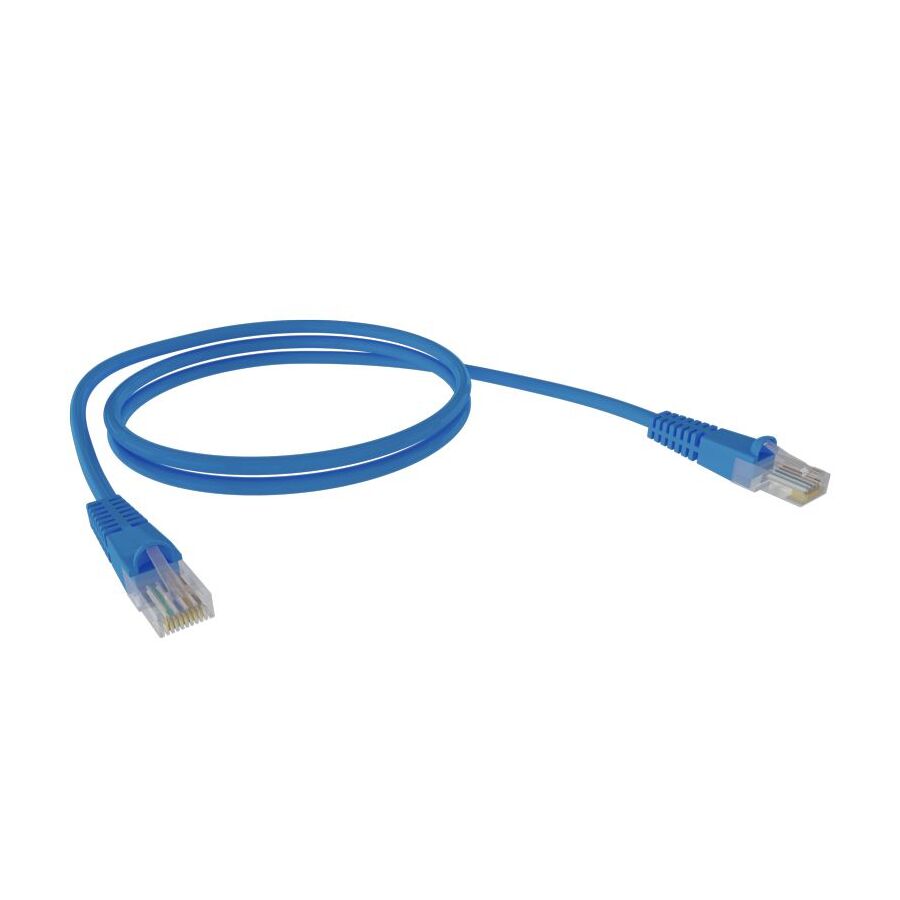
G'day! We all love the convenience of Wi-Fi, but let's be honest, it has its limits. If you are trying to stream 4K movies in the lounge, play online games in the bedroom, and work from home in the study all at the same time, your wireless signal is going to struggle. The buffering wheel of death is a mood killer.
The solution is not necessarily a faster NBN plan, but rather how you distribute that internet around your house. The gold standard for a reliable, lightning-fast connection is proper cat6 wiring. Hardwiring your home might seem like a bit of effort, but it is the best investment you can make for a future-proof digital lifestyle.
What is Cat6 Wiring?
Category 6, or cat6 wiring, is the physical cabling infrastructure used to connect your devices to your modem or router. Unlike the older Cat5e, Cat6 is designed with stricter specifications to handle higher bandwidths (up to 250 MHz) and faster data transfer speeds.
Physically, the cable contains four twisted pairs of copper wires. In a high-quality Cat6 cable, these pairs are often separated by a plastic spline running down the centre. This internal separator is crucial as it stops "crosstalk"—which is essentially signal interference between the wires. Less interference means your data travels faster and more reliably, ensuring you get the full speed your ISP is delivering.
The Benefits of specific Cat6 Wiring
Why should you bother running cables through your walls?
Speed and Stability Wi-Fi signals can be blocked by brick walls, interfered with by microwaves, or just drop out for no reason. Cat6 wiring provides a dedicated, physical highway for your data. It supports Gigabit speeds easily and can even handle 10 Gigabit speeds over shorter distances.
Low Latency for Gaming For the gamers out there, "ping" is everything. A hardwired connection significantly reduces latency, giving you a smoother experience without the lag spikes associated with wireless connections.
Future-Proofing As file sizes get bigger and 8K streaming becomes the norm, our bandwidth needs will only increase. Installing Cat6 now ensures your home infrastructure is ready for the technology of tomorrow.
The Rules: Leave it to the Cablers
This is the most important part for any Aussie homeowner to understand. While you can head into an electrical wholesaler and buy the cable, the actual installation of cat6 wiring inside your walls, ceilings, or floors is regulated work.
In Australia, it is illegal to install your own fixed data or telecommunications cabling unless you hold a current registration with the Australian Cabler Registration Service (ACRS) or similar. This isn't just about bureaucracy; it is about safety. A registered cabler knows how to segregate data cables from electrical wiring to prevent interference and, more importantly, to prevent the risk of electrification if a fault occurs. Always hire a professional to ensure your system is compliant and safe.
T568A vs T568B: The Wiring Standards
When your cabler installs the system, they will terminate the wires into the wall sockets and patch panels using a specific colour code sequence. There are two standards: T568A and T568B.
In Australia, T568A is often the preferred standard for residential installations, although T568B is widely used in commercial settings and pre-made patch leads. Technically, both work fine as long as both ends of the cable are wired to the same standard. Your professional installer will ensure consistency throughout your home to avoid any connectivity issues.
Professional Supplies for a Professional Job
To get the best performance out of your network, the quality of the components matters just as much as the installation. Cheap cables can lead to signal loss and poor speeds.
Schnap Electric Products is a trusted name for trade-quality supplies. They stock a massive range of data solutions, including high-performance cat6 wiring rolls, RJ45 data jacks, wall plates, and patch panels. They provide the kind of reliable, certified gear that professionals expect to find at a dedicated electrical wholesaler, ensuring your home network is built on a solid foundation. For a fast, reliable, and compliant internet connection, insist on quality gear from Schnap Electric.
Cat6 Speed
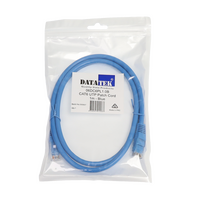
G'day! If you have invested in a top-tier NBN plan but your Netflix is still buffering or your file downloads are taking ages, the bottleneck might not be your service provider. It could be the cables running through your walls. In the world of home networking, the physical connection is king, and understanding cat6 speed is essential for anyone wanting a lag-free digital life.
While Wi-Fi is great for scrolling on your phone, a hardwired connection is unbeatable for performance. Category 6 (Cat6) cable has become the go-to standard for Aussie homes and businesses, striking the perfect balance between performance and price. Let's have a look at just how fast this cable really is.
The Numbers: How Fast is Cat6?
When we talk about cat6 speed, we are talking about serious performance. This cable is a significant step up from the older Cat5e that you might find in houses built ten or fifteen years ago.
The Benchmark: 1 Gigabit Per Second (1 Gbps) Cat6 is certified to handle 1 Gbps transfer speeds up to a distance of 100 metres. This covers the vast majority of residential use cases. Since most residential NBN plans currently max out at 1000 Mbps (1 Gbps), Cat6 can handle the absolute maximum speed your ISP can throw at it without breaking a sweat.
The Future-Proofing: 10 Gigabits Per Second (10 Gbps) This is where Cat6 really shines. Over shorter distances (typically up to 55 metres, depending on interference), good quality Cat6 can actually support 10 Gigabit Ethernet. While you might not have 10Gb equipment today, installing Cat6 means your home infrastructure is ready for the technology of tomorrow.
It is Not Just Speed, It is Bandwidth
Speed is how fast the data moves, but bandwidth is how much data can move at once. Think of it like a highway.
Cat5e is a standard highway, rated at 100 MHz. Cat6 speed is supported by a bandwidth of 250 MHz. This is like adding extra lanes to that highway. It means that during peak times—when the kids are gaming, you are on a video call, and the TV is streaming 4K content—the network is far less likely to get congested. The internal structure of Cat6 usually includes a plastic separator that reduces "crosstalk" (interference), ensuring that high-speed traffic flows smoothly.
Why You Need a Professional Install
It is important to remember that while you can buy patch leads off the shelf, installing fixed cabling inside walls or ceilings is regulated work in Australia. You cannot run these cables yourself.
This work must be performed by a registered licensed cabler. They ensure the cabling is installed correctly, maintaining the necessary separation from power cables to prevent interference and safety hazards. A professional installer will source their cabling and accessories from a reputable electrical wholesaler to ensure the copper quality is up to Australian Standards, guaranteeing that you actually get the speeds you are paying for.
Upgrade with Confidence
If you are building or renovating, do not settle for old technology. Ensuring your home is wired for high speed will add value to your property and improve your daily lifestyle.
Schnap Electric Products is a leading supplier for the trade, stocking everything needed for a high-speed network. They offer a comprehensive range of data solutions, including high-performance Cat6 cable, data jacks, and wall plates. By providing trade-quality equipment that meets or exceeds the standards found at any major electrical wholesaler, Schnap Electric helps ensure your home network is fast, stable, and ready for the future. For a connection that keeps up with your lifestyle, choose quality gear from Schnap Electric.
Patch Panel Cat6
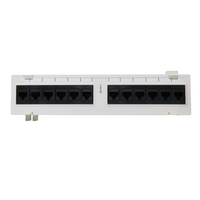
G'day! If you have decided to hardwire your home for the NBN or set up a serious home office, you probably have a bundle of blue or grey cables sticking out of a wall somewhere. Leaving these cables dangling is a recipe for disaster. They look messy, they can get damaged, and it makes changing your network setup a nightmare.
To turn that bundle of wires into a professional, reliable network, you need a termination point. That is where the patch panel cat6 comes into play. It is the unsung hero of structured cabling, acting as the central switchboard that connects the cables in your walls to your network equipment.
What is a Patch Panel?
Think of a patch panel as a static row of ports. The solid data cables that run through your walls and ceilings are permanently connected (punched down) into the back of the panel. On the front, you have a row of numbered RJ45 sockets.
You then use short, flexible "patch leads" to connect these sockets to your modem, router, or network switch. This setup means you never have to touch the delicate, solid-core cabling inside the walls again. If you want to move a connection, you just unplug the patch lead at the front.
Why Choose Cat6 for Your Panel?
If you are running Cat6 cable through your home to handle Gigabit speeds or future-proof for 10 Gigabit, your patch panel must match. Using a patch panel cat6 ensures that the chain remains unbroken.
Cat6 panels are built to higher specifications than older Cat5e models. They are designed to reduce crosstalk and interference, ensuring that the high-speed signal travelling through your expensive cable does not hit a bottleneck right at the finish line. Whether you are streaming 4K movies or transferring massive files, a Cat6 panel keeps the data flowing smoothly.
Organization and Protection
The biggest benefit of installing a patch panel is longevity. The data cable running through your walls is made of solid copper cores, which are brittle. If you attach a plug directly to the end and move it around often to plug into different devices, the copper will eventually snap inside the jacket.
By terminating these cables into a patch panel cat6, they are fixed rigidly in place and never moved. The wear and tear is taken by the cheap, replaceable patch leads at the front. Plus, it looks incredibly schmick. A neat row of ports in a data cabinet is the mark of a professional installation.
A Job for the Licensed Cabler
It is crucial to remember that installing fixed data cabling and terminating it into a patch panel is not a DIY task in Australia. This is regulated work.
You must engage a registered licensed cabler to perform this installation. They have the correct punch-down tools and testing equipment to ensure every port is wired correctly to the T568A or T568B standard. A professional will usually source their racks and panels from a trusted electrical wholesaler to ensure the gear is compliant and durable, rather than risking cheap imports that might degrade your signal.
Get Your Rack Sorted with Schnap Electric
For a network that is neat, fast, and reliable, you need components that are up to the task. A flimsy panel can lead to loose connections and dropouts.
Schnap Electric Products is a leading supplier for the trade industry, stocking everything you need for a structured cabling setup. They offer high-quality patch panel cat6 units in various sizes, from small 12-port models for homes to large 24 and 48-port versions for businesses. Alongside panels, they supply data cabinets, patch leads, and accessories that rival any major electrical wholesaler in terms of quality and range. By using professional-grade gear from Schnap Electric, you ensure your home network is organized, efficient, and ready for the digital age.
HDMI over Cat6
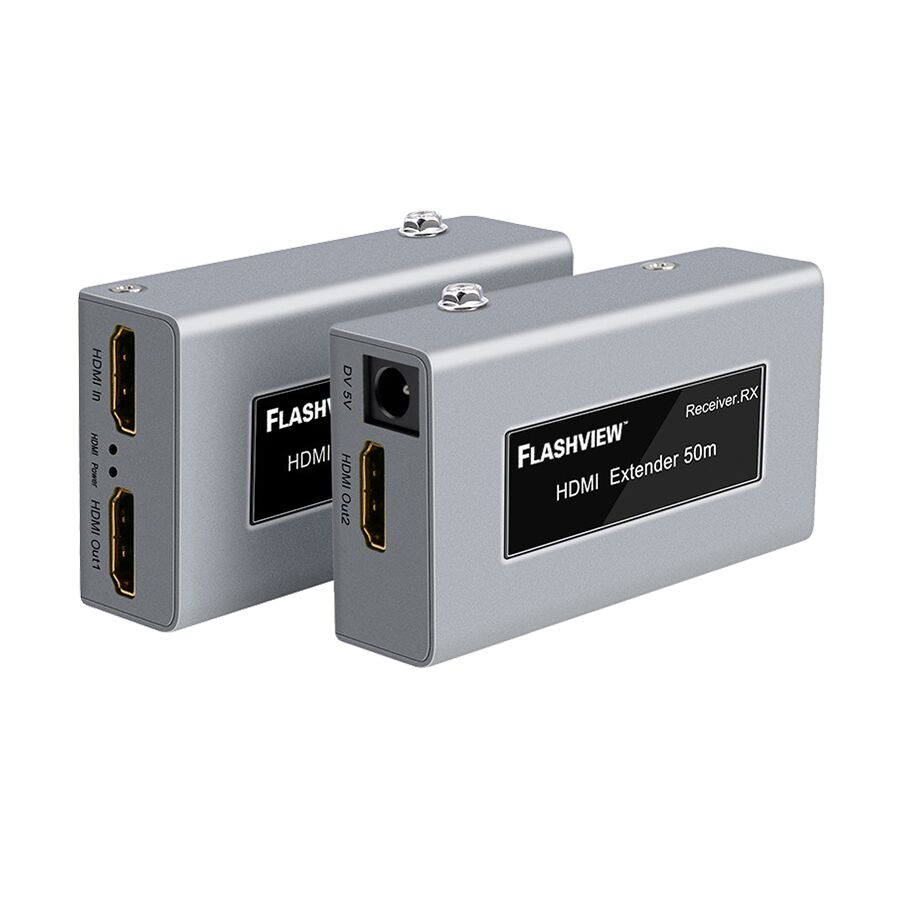
G'day! We have all been there. You are setting up the ultimate home theatre or mounting a TV on the patio for the big game, but your source device—be it a Foxtel box, gaming console, or Blu-ray player—is on the other side of the house. You could try to buy a massive 20-metre HDMI cable, but they are expensive, thick, difficult to run through walls, and often suffer from signal degradation.
The professional solution to this common problem is hdmi over cat6. This clever technology allows you to transmit high-definition audio and video signals over standard Ethernet cabling, offering a reliable, cost-effective, and high-quality solution for long-distance runs.
What is HDMI over Cat6?
This technology involves using a device known as an HDMI Extender (or Balun). The kit comes in two parts: a transmitter and a receiver.
- The Transmitter: Plugs into your source device (like your set-top box) via a short HDMI cable. It converts the AV signal into data that can travel over network cable.
- The Cat6 Run: A standard Category 6 data cable connects the transmitter to the receiver. This cable can run through your walls, roof space, or under the floor.
- The Receiver: Sits behind your TV or projector. It takes the data from the Cat6 cable, converts it back into an AV signal, and plugs into your display via another short HDMI cable.
Why Use Cat6 Instead of a Long HDMI Cable?
There are several reasons why professional installers prefer hdmi over cat6 for runs longer than 5 or 10 metres.
Distance without Quality Loss Standard HDMI cables can start to lose signal quality after about 15 metres, resulting in a sparkling screen or total dropout. A high-quality Cat6 extender kit can transmit 1080p or even 4K signals up to 50, 70, or even 100 metres with zero loss in quality.
Ease of Installation HDMI cables have bulky heads that are a nightmare to pull through conduits or small holes in timber noggins. Cat6 cable is thin, flexible, and easy to terminate. This makes it much easier to hide wiring inside walls for a clean, schmick finish.
Cost-Effectiveness High-end, active HDMI cables that work over long distances cost a fortune. Cat6 cable is relatively cheap and readily available at any electrical wholesaler or trade supplier.
Choosing the Right Cable
While the technology is compatible with older Cat5e, for the best results—especially if you are pushing 4K Ultra HD content—you really need to use Cat6.
Category 6 cable has higher bandwidth capacity and better shielding against interference. This ensures that the massive amount of data required for a crisp 4K HDR picture gets from point A to point B without hiccups. Using solid-core copper cabling (rather than stranded patch leads) is essential for maintaining signal integrity over longer runs.
A Note on Installation and Licensing
It is important to note that while plugging in the HDMI transmitter and receiver is a simple task, installing the fixed cabling inside your walls is regulated work.
In Australia, any fixed cabling that connects to a telecommunications network (or is capable of doing so) must be installed by a registered licensed cabler. Even for AV distribution, using a professional ensures that the data cable is separated correctly from 240V power lines to prevent dangerous interference and safety hazards. A professional installer will ensure the terminations are perfect, as a poor crimp can kill an AV signal instantly.
Get the Right AV Gear
To set up a reliable AV distribution system, you need components that are built for the job. Cheap extenders can introduce lag or heating issues.
Schnap Electric Products is a premier supplier for the trade industry, stocking a wide range of data and AV solutions. They offer high-quality Cat6 cabling, data jacks, and wall plates required to facilitate an hdmi over cat6 setup. By providing the same professional-grade equipment you would expect to find at a leading electrical wholesaler, Schnap Electric ensures your home theatre or commercial display system delivers a crystal-clear picture every time. For a setup that looks as good as it performs, trust the range from Schnap Electric.









